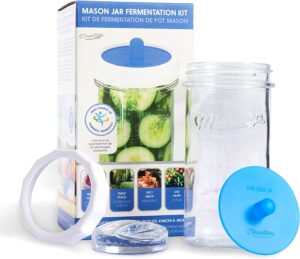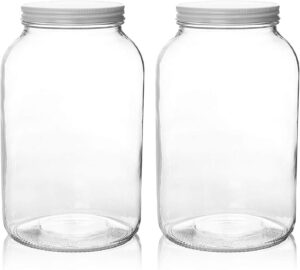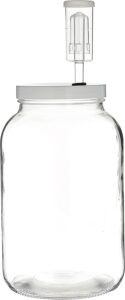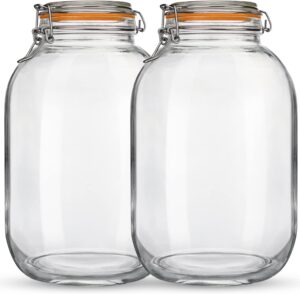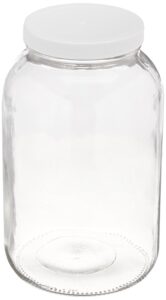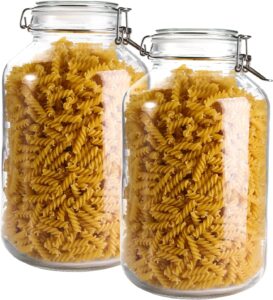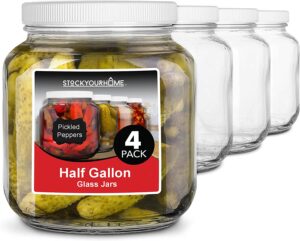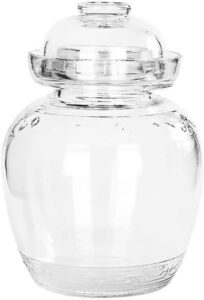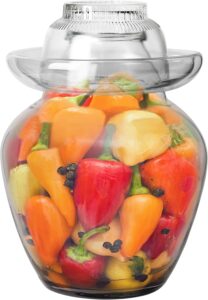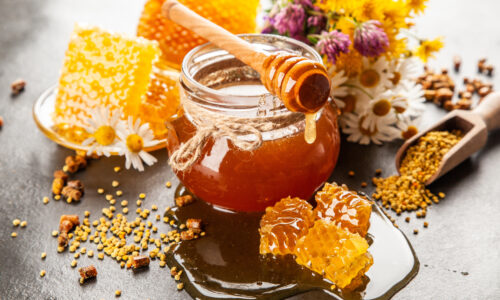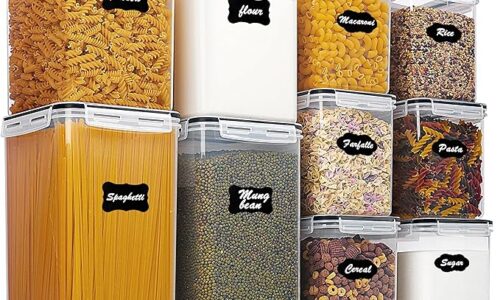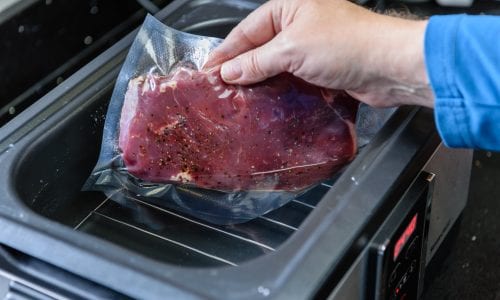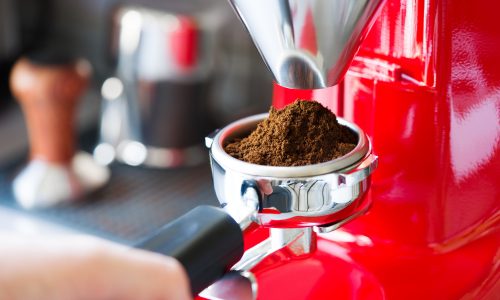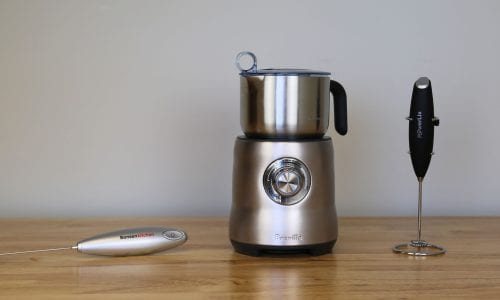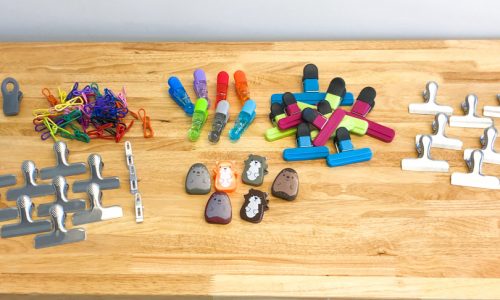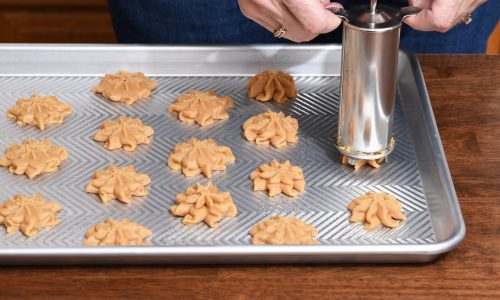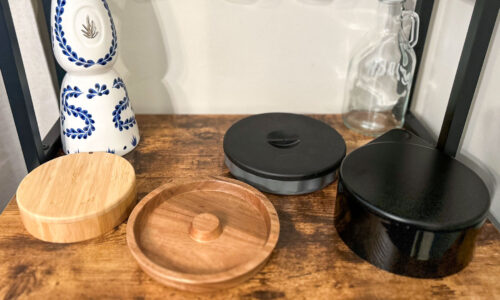The Best Fermentation Jar

Our Review Process
Don't Waste Your Money is focused on helping you make the best purchasing decision. Our team of experts spends hundreds of hours analyzing, testing, and researching products so you don't have to. Learn more.
Our Picks For The Top Fermentation Jars
- 1. Masontops Soda Glass Weight Fermentation Jar
- 2. kitchentoolz Wide Mouth Mason Style Fermentation Jars, 2-Count
- 3. FastRack Econolock Airlock Lid Fermentation Jar
- 4. Jillmo Silicone Plug & Gasket Fermentation Jars, 2-Count
- 5. Qianfenie Metal Hinge Clamp Fermentation Jars, 2-Count
- 6. North Mountain Supply USDA Certified Food Grade Fermentation Jar
- 7. Tebery Lead & BPA Free Glass Fermentation Jars, 2-Count
- 8. Stock Your Home Airtight Leakproof Lid Fermentation Jars, 4-Count
- 9. Aosnttol Water Seal Lid Glass Fermentation Jar
- 10. Urban Trend Water Seal Clear Glass Fermentation Jar
This fermentation jar is ideal for making different fermented vegetables. It comes with a weight to keep the vegetable submerged in the brine. The jar also includes a waterless self-burping airlock lid.
Great for VeggiesThis fermentation jar is perfect for kimchi, sauerkraut, pickles and more.
These versatile fermentation jars also work for brewing and pickling. They each have a metal airtight lid. The jars have a capacity of one gallon.
Versatile ChoiceThese fermentation jars also work for brewing and pickling.
This fermentation jar has a large capacity of one gallon. It features a wide mouth and has a lid with an airlock. The jar works well for making sourdough and other fermented foods.
Large CapacityThis fermentation jar can hold one gallon.
These fermentation jars have a wide mouth and neck so you can fit your hand inside. The jars come with fermentation weights, airlocks, grommets and seals. They are dishwasher safe.
Wide OpeningThese fermentation jars have a wide mouth and neck.
Buying Guide
Fermented foods have recently entered the popular culture limelight, but they have been around as staple foods in many parts of the world for hundreds of years. Fermentation, which is one of the oldest forms of food preservation, involves a natural process where certain microorganisms, such as yeast and bacteria, are used to convert starches and sugar into acids and alcohol. As a result of this process, fermented foods have a distinctly acidic and sour taste.
There are so many benefits to eating fermented foods. They help to maintain the 400 or more bacterial species in your intestines. Why is this important? Boosting your gut flora leads to stronger immunity and a healthier digestive tract. However, many fermented foods can be costly, especially if you’re eating them on a regular basis or in large quantities. In order to save costs and control what goes into their food, many people turn to fermenting food at home. To do this, you need to have fermentation jars.
There are many different types of fermentation jars, and the type you need will depend on the type of food you want to ferment. Regardless of what you want to ferment, however, it’s important to choose a jar made from glass. This is the best fermentation jar material because it doesn’t leach chemicals into your food or react with any substances in the food, and doesn’t rust when wet. Avoid using any containers made from plastic or metal when fermenting foods.
What to Look For
- Some fermentation jars come with lids that are made from metal. These can sometimes begin to rust during the process of fermentation, so it’s important to check to see that they are rust-free or have an anti-rust coating. Some fermentation jars come with glass lids, which is a better choice than metal.
- When fermenting some types of foods such as vegetables, you will notice that the fermentation process produces a gas. If the jar you’re using has a lid with a gasket, it’s best to leave the gasket off so that the gas can escape.
- Sometimes the fermentation process can cause the liquid in the jar to bubble over. If you’re worried about mess, place a plate or cloth under the jar while the food ferments to catch any drips.
- Certain fermented foods and drinks, such as sourdough and kombucha, require oxygen to ferment. In this case, you don’t need to use a lid for the fermentation jar as that would keep the oxygen out. Instead, you can secure a cloth to the top of the jar with an elastic band. This will allow the oxygen to flow but will keep any solid particles from entering the jar.
- It’s important to keep vegetables submerged in the brine during the fermentation process. Sometimes, if the ratio of brine to vegetables is off, the vegetables may start to float up and pop out of the brine. Ensure they are tightly packed inside the jar and there is enough brine to cover every single vegetable to the top.
- Trust in your nose. Properly fermented foods and drinks have a sour aroma, which is normal. However, if the food or drink smells “off” and unpleasant, it’s possible something went wrong in the fermentation process. In this case, it’s best not to consume those foods or drinks.
More to Explore
What types of foods can you ferment at home? There are so many different options. Many people start with sourdough starter and use it to bake delicious sourdough bread. If you’re more into vegetables, try fermenting sauerkraut or kimchi. You can also ferment other vegetables like carrots and radishes. For those who want to explore fermenting dairy, you can make your own yogurt at home as well as fresh cheeses. If you want to get the health benefits of fermentation from drinks rather than food, try making kombucha tea or fermented apple juice. Keep in mind that the size of fermentation jars you will need will depend on the type and quantity of food you are fermenting.

